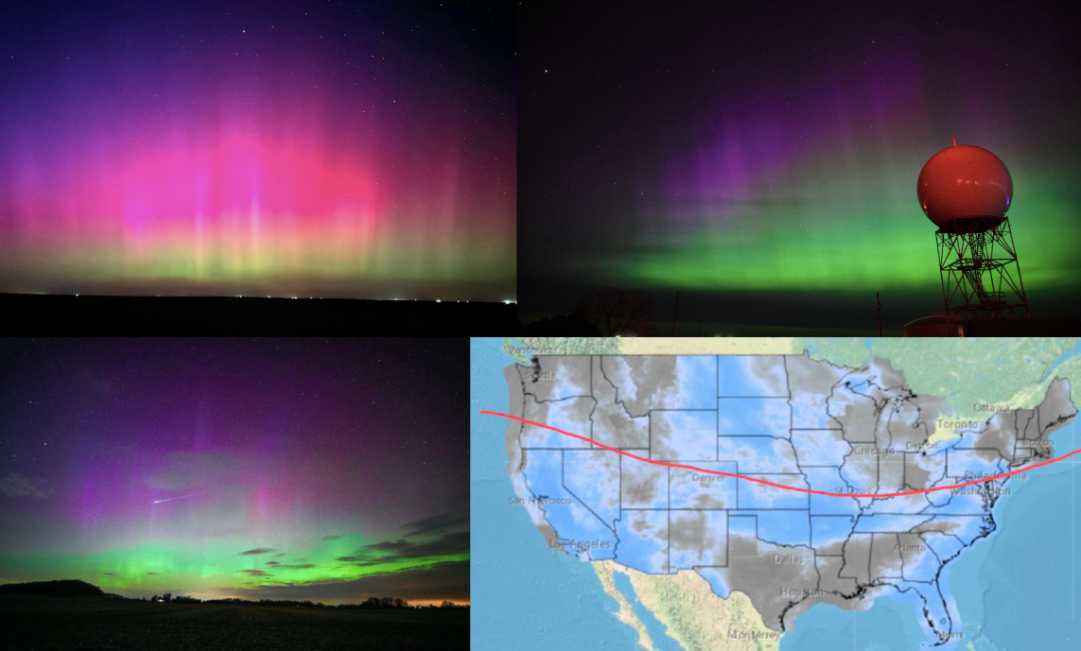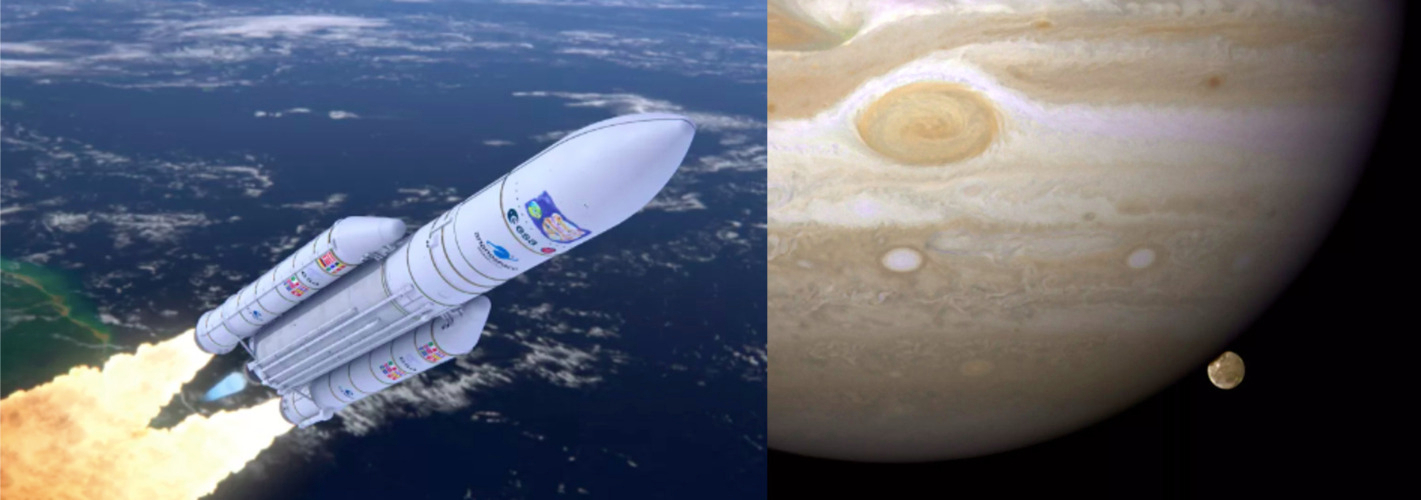Nature’s light show just played a sold-out gig

Images: NWS Dodge City | Kelsey Kremer/The Register | Landon Moeller | Space Weather Watch
The Northern Lights, aka aurora borealis, were visible across the northernmost 30 US states over the past two nights, as a result of specific solar activity that occurred late last week (and surprisingly not magic).
🌌 Some quick background: The Northern and Southern Lights are caused by activity on the surface of the Sun – specifically, solar storms that eject huge clouds of electrically charged particles, which can then collide with the Earth. Or to oversimplify: the sun vomits charged particles in every which direction, and some eventually hit Earth.
- Most of these charged particles are deflected away upon impact, like a girl who’s working on herself but keeps getting hit on by hopeful suitors, though some are captured by the Earth’s magnetic field and attracted to its north and south poles.
- As these charged particles accelerate towards the poles, they slam into atoms and molecules in Earth’s atmosphere, heating them up and leaving a trail of glowing colored light across the sky. This visual phenomenon is what we call the Northern and Southern Lights.
🤔 Bottom line: The reason why the lights were so widely visible this go-around is rooted in an event that happened last Friday. That was when the Sun let off an unusually large burst of plasma, called a coronal mass ejection. Part of this plasma burst collided with Earth on Sunday night, resulting in charged particles (aka the Northern and Southern Lights), appearing closer to the equator than usual on Sunday and Monday evenings.
Share this!
Recent Science & Emerging Tech stories

Science & Emerging Tech
| April 21, 2023Starship was meant to fly
🚀💥 SpaceX’s Starship, the world’s most powerful rocket, exploded yesterday morning in its first-ever test, roughly four minutes after a successful launch.

Science & Emerging Tech
| April 13, 2023The search for life on Jupiter’s moons begins
Later this morning (or maybe even as you’re reading this🤔), the European Space Agency will launch a spacecraft that will be the first in history to enter the orbit of a moon other than our own.

Science & Emerging Tech
| April 12, 2023Bronze-age humans liked to get high, too
🍄 Hair from a 3,000-year-old burial site in Menorca, Spain, contains the oldest known evidence that humans in Europe took hallucinogenic drugs to get high, per a peer-reviewed study published last Thursday in Scientific Reports.
You've made it this far...
Let's make our relationship official, no 💍 or elaborate proposal required. Learn and stay entertained, for free.👇
All of our news is 100% free and you can unsubscribe anytime; the quiz takes ~10 seconds to complete